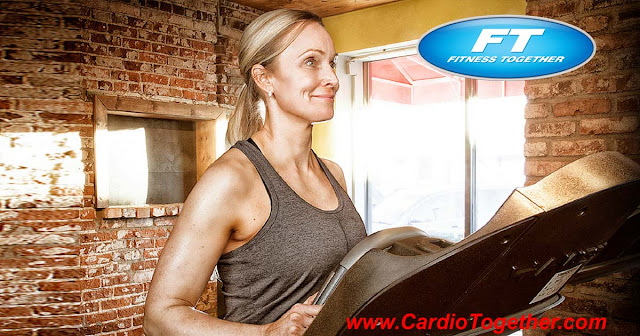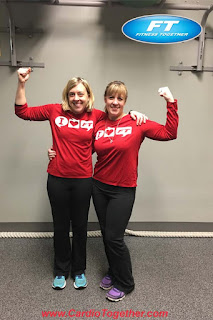Trainer Tuesdays
Welcome back to the weekly edition on Trainer Tuesdays. Make sure to check in
at our blog every Tuesday evening to learn the expertise of our great staff. Aside from being fantastic exercise
coaches, they are also extremely knowledgeable in many aspects of health and
fitness; so, it's time that you get to know them a little better! Each week, we
will post a frequently asked, or sometimes just a fun fitness related question
followed by the answers of each of the trainers at Fitness Together Brecksville.
What are the Symptoms & Risk Factors of Heart Disease? How Can Diet & Exercise Help?
Michael Roberto: When
talking about heart disease, it is very important to know and look for signs of
irregularity. Symptoms may include shortness of breath, nausea, pain in
the neck, chest and jaw regions of the body and fatigue ranging from low to
extreme. But with exercise, you can lower your risk of having heart
disease. By exercising, you lower your blood pressure and reduces strain
on the heart. Exercise also increases good cholesterol which transports
fat away from the arteries and sends the fat to the liver to be filtered.
Eating a clean diet rich in fruits, vegetables, lean meats, whole grains
and limiting refined sugar will also lower your chances of heart disease.
Justin Traft: So many people ask ‘what are some risk factors
of heart disease?’ This is pretty easy to answer-- Diets play a huge part in
it. Studies have shown people consuming large amounts of processed foods and
red meats have a higher likelihood of developing heart disease. What makes that
even worse is that 5 out of 10 people with that lifestyle don't exercise, which
heightens the risk even more for suffering from heart disease. You can't absorb
garbage on a nonstop basis and expect your heart to keep pumping normally
without the proper nutrition and exercise that it needs. Keep in mind heart
disease kills more people then every form of cancer... it’s the leading cause
of death in both men and women. A sound diet is just as important as a great
workout routine. Having a cardio program like Cardio Together is also a key
factor in keeping your heart healthy. Getting your heart rate up is beneficial
for not only you but for your heart as well. It's a living oxygenated muscle.
Doing cardio helps to ensure that when your heart is in cardiac stress or
strain it's able to handle the load put upon it. So do yourself a favor if not
already start thinking about your heart. Remember a healthy heart equals a lifetime
of happiness instead of a lifetime of sadness.
Adam Teplitz: With
February being heart health month, it's important to take note of the risk factors
for heart disease.
There are certain major risk factors that you're born with, which cannot be
changed.
Increasing Age: the majority of people who die of coronary heart disease are 65
years or older.
Gender: men are at a greater risk for heart attacks than women. They tend to
have heart attacks earlier in life. Women have some protection because of the
effects produced by estrogen; however, post-menopausal women will generally
have the same risk as men.
Hereditary: children of parents with heart disease are more likely to develop
it themselves.
Fortunately, there are major risk factors that you can modify, treat or control
by changing your lifestyle or taking medicine. These risk factors include
stress, alcohol, and diet.
A healthy
diet is one of the best ways to control and limit heart disease. The food you
eat can affect other controllable risk factors: cholesterol, blood pressure,
diabetes and weight. Make sure to choose nutrient rich foods containing
vitamins, minerals and fiber.
Physical
inactivity is another major risk factor that you have complete control over.
Regular moderate to vigorous physical activity helps reduce the risk of heart
and blood vessel disease by keeping the heart strong.
A healthy
diet complemented with a structured strength and cardio routine is the perfect
weapon to fight cardiovascular disease.
Amanda Ricci: Some of the risks of heart disease
include: being of the age 65 years or older, male gender, family history,
smoking, high cholesterol, high blood pressure, sedentary lifestyle and having
diabetes. Some of the symptoms for heart disease include: chest pain or heart
palpitations, and sometimes there are no symptoms.
Exercise and diet can help reduce your risk for heart disease in that building
muscle helps to tone the smooth lining of your arteries, (which is composed of
smooth muscle tissue) and that helps to assist the blood in returning back to
the heart. This means that the heart does not have to work as hard and
which is why your blood pressure can potentially decrease up to 12 hours after
working out. Exercise also helps to increase your good cholesterol levels
a.k.a. HDL (high density lipoproteins). According to the Mayo Clinic,
“For every 6 lbs. you lose, your HDL may increase by 1mg/dl. Another way to
increase your HDL is by eating healthier. A good range for your HDL
cholesterol is between 40-59 mg/dl, the higher the better.
In addition, one of the other
ways that exercise and good nutrition helps reduce the risk of heart disease
include preventing or reversing diabetes. Exercise assists by reducing
blood glucose or sugar levels in the body. When an individual has
diabetes it means their body is not producing enough insulin from the pancreas
to process the sugar and distribute the energy to our cells. When the pancreas
isn’t functioning properly and too much sugar stays in the body it can cause
diabetes. Therefore, exercise helps the cells in the body distribute and
eliminate that sugar in the body. A healthier diet can also help by
reducing the amount of sugar that the pancreas must process. So as you
can see there are numerous benefits to exercise and a healthy diet. It is
better to reverse or prevent development of as many risk factors as
possible. Obviously age, gender and family history cannot be controlled.
However, smoking, cholesterol, blood pressure, lifestyle and diabetes are able
to be controlled.
© 2016 Fitness
Together, Inc. All Rights Reserved.





